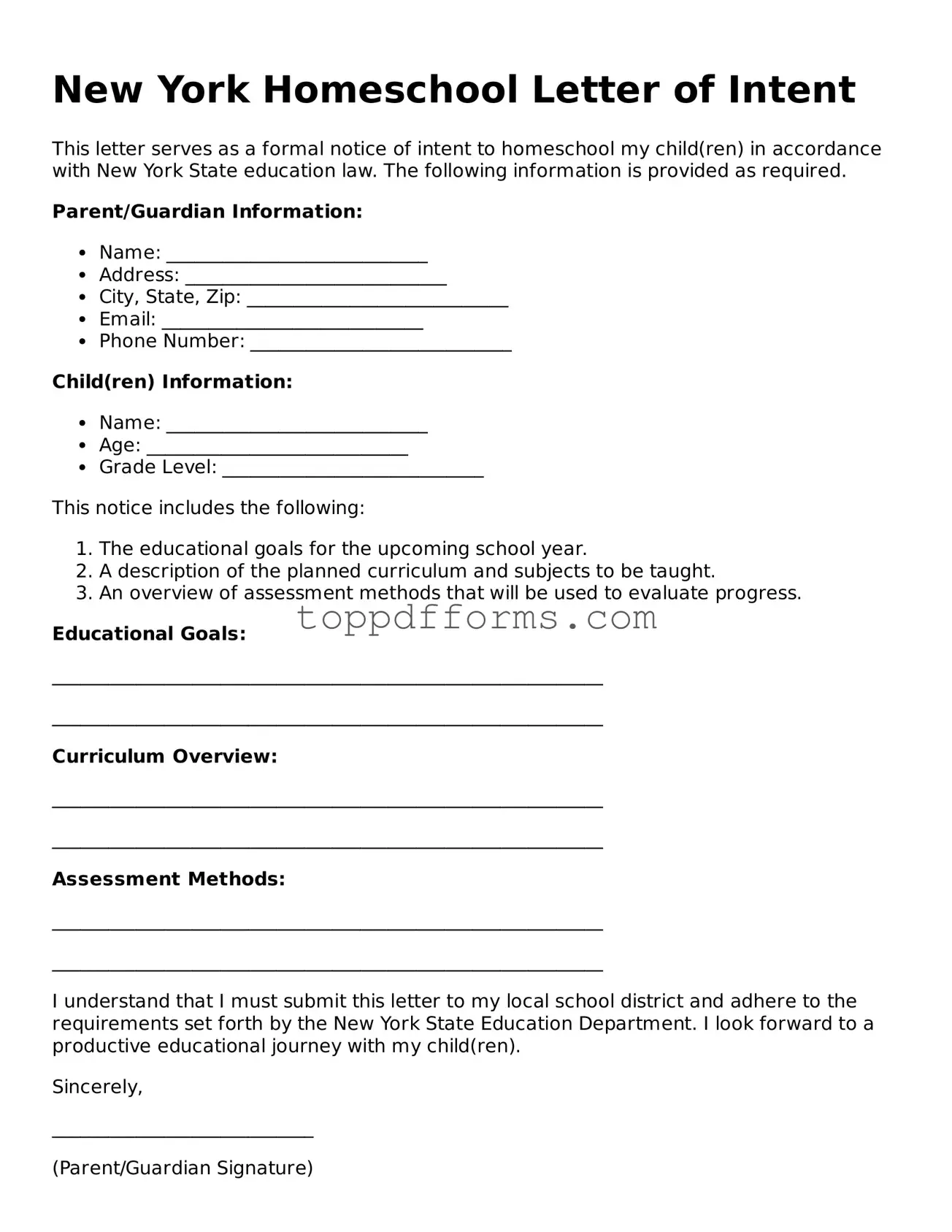What is the New York Homeschool Letter of Intent form?
The New York Homeschool Letter of Intent form is a document that parents or guardians must submit to their local school district to formally notify them of their intention to homeschool their children. This letter is a crucial first step in the homeschooling process and establishes the family's commitment to providing an educational program outside of the traditional school system.
Who needs to submit the Letter of Intent?
Any parent or guardian who wishes to homeschool a child of compulsory school age in New York State must submit the Letter of Intent. This includes families with children who have never attended school as well as those who are withdrawing their children from public or private schools.
When should the Letter of Intent be submitted?
The Letter of Intent should be submitted at least 14 days before the start of the homeschooling program. It is recommended to send it as early as possible, especially if the family is transitioning from a traditional school setting, to ensure compliance with local regulations.
What information is required in the Letter of Intent?
The Letter of Intent typically requires basic information such as the names and ages of the children being homeschooled, the address of the homeschooling location, and a statement of intent to provide instruction. Some districts may have specific requirements, so it is advisable to check with the local school board for any additional information needed.
Is there a specific format for the Letter of Intent?
While there is no mandated format for the Letter of Intent, it should be clear and concise. It is best to include all required information in a straightforward manner. Some families choose to use a template, which can be found online or provided by local homeschooling organizations.
What happens after the Letter of Intent is submitted?
Once the Letter of Intent is submitted, the local school district will acknowledge receipt of the document. Parents will then need to prepare an Individualized Home Instruction Plan (IHIP) for their child, which outlines the educational program they plan to implement. The district may review the IHIP and provide feedback or request modifications.
Can the Letter of Intent be revoked?
Yes, parents can revoke their Letter of Intent at any time if they decide to enroll their child back into a traditional school setting. It is advisable to inform the local school district of this decision in writing to ensure proper documentation is maintained.
Are there any penalties for not submitting the Letter of Intent?
Failing to submit the Letter of Intent can result in legal consequences, as homeschooling without proper notification is considered a violation of New York State education law. Parents may face fines or other penalties if they do not comply with the homeschooling regulations.
Where can I find the Letter of Intent form?
The Letter of Intent form can typically be obtained from the local school district's website or office. Additionally, many homeschooling organizations provide resources and templates that can assist parents in completing the form correctly.
Do I need to submit the Letter of Intent every year?
Yes, parents must submit a new Letter of Intent each year for every child they intend to homeschool. This annual notification ensures that the school district is aware of the ongoing homeschooling status and allows for continued compliance with state regulations.
